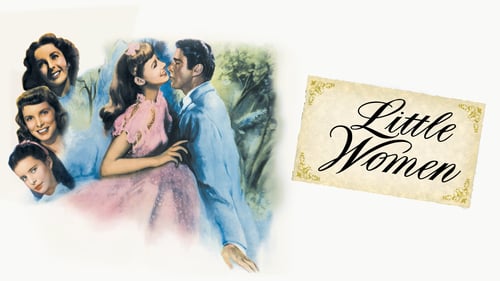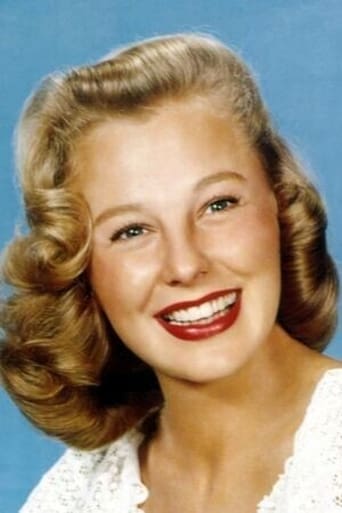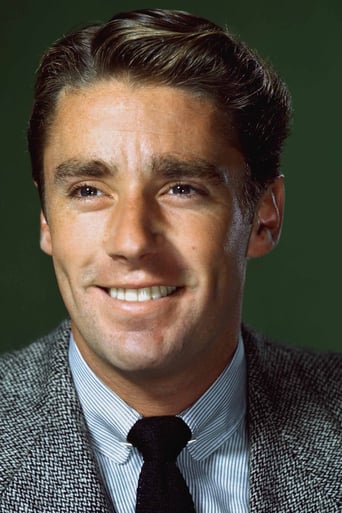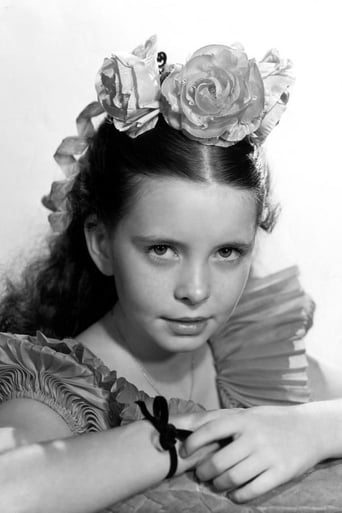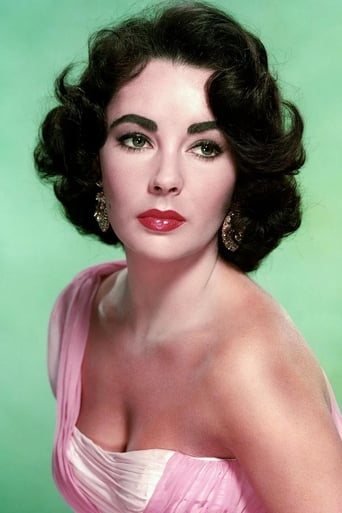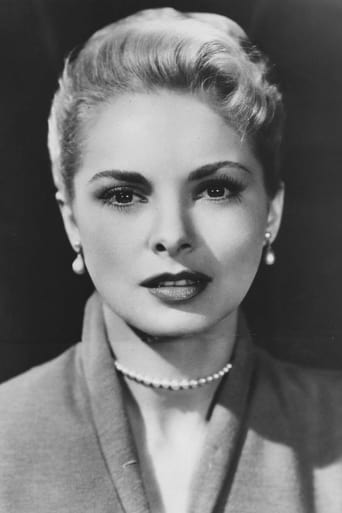Artivels
Undescribable Perfection
AniInterview
Sorry, this movie sucks
Platicsco
Good story, Not enough for a whole film
Geraldine
The story, direction, characters, and writing/dialogue is akin to taking a tranquilizer shot to the neck, but everything else was so well done.
HotToastyRag
I've seen every version of Little Women out there, and while the 1949 adaptation has its good points, it's not my favorite. June Allyson, cast in the lead as Jo, just isn't likable. She's not a very good actress, and it's not at all believable that she's living in the 1800s. It feels like she's the understudy during her third rehearsal; Katharine Hepburn breathes infinitely more passion into the role in the 1933 version.The good parts of this remake are Margaret O'Brien as Beth and Elizabeth Taylor as Amy. Who would have thought Liz would look stunning as a blonde? She's just adorable in this movie, but unfortunately doesn't have a very big part. Margaret O'Brien is by far my favorite of the Beths; she's endearing and believable, and unlike some actresses (I'm looking at you Jean Parker and Claire Danes!) she's actually the right age for the part. The iconic scene when Beth thanks Mr. Laurence, played by veteran C. Aubrey Smith in this version, for the piano is a tearjerker. In no other version do I even get a lump in my throat during that scene.If you really love this story and are intent on seeing every version out there, go ahead and rent this one. But if you're looking for the best version, rent the 1933 Katharine Hepburn adaptation. June Allyson just ruins this movie.
jacobs-greenwood
I'd heard this was the weakest screen adaptation of Louisa May Alcott's novel. However, after 90 minutes of wonderfully sentimental tear-jerking moments, to say nothing of the Academy Award winning Art Direction-Set Decoration and Oscar nominated Color Cinematography, I thought those assessments must be wrong.Unfortunately, the last fourth of the film, which focuses primarily on the Jo March character, proved that those critics were right. I think the reason for this is that June Allyson just couldn't carry it as well as (e.g.) Katharine Hepburn did in the original; of course, few could. It's still a very good family drama.This version was produced and directed by eventual Irving G. Thalberg winner Mervyn LeRoy, with a screenplay by Victor Heerman, Sarah Y. Mason and Andrew Solt. In addition to Ms. Allyson, the cast includes Peter Lawford, Margaret O'Brien, Elizabeth Taylor, Janet Leigh, Rossano Brazzi, Mary Astor, Lucile Watson, C. Aubrey Smith, Leon Ames, and Harry Davenport (among others). Harlan Briggs and Will Wright, who plays a kindly storekeeper, appear uncredited.The March family consists of four daughters, Jo (Allyson), Beth (O'Brien), Amy (Taylor), and Meg (Leigh), their mother they call Marmee (Astor), their crotchety and rich Aunt (Watson), and absent (at the beginning and for most of the film) Reverend father (Ames), who's gone off to war. They live next door to the Laurences, Laurie (Lawford) lives with his grandfather James (Smith) because his parents are no longer living.In this version: Jo is the outgoing tomboy who's an artistically creative writer, the second oldest daughter to socially proper Meg who, unlike Jo, is interested in the opposite sex; Amy is a self centered braggart and the youngest, Beth, is a talented piano player who is shy. Because Laurie is lonely, he watches the March family activities through his window. Soon, however, Jo and Laurie are fast friends, running, chasing and playing with one another as two boys would, earning Jo some rebuffs from Meg and Aunt March and growing affections from Laurie.Mr. Laurence is thought to be as stern and crotchety as Aunt March but Jo, and later Beth, learn that their assessment is all wrong. He becomes a good neighbor to them, allowing shy Beth to utilize his piano without an audience that would frighten her. Even though the Marchs themselves are struggling without father's income, Marmee helps those even less fortunate setting a good example for her daughters, who follow her lead.Unfortunately this leads to Beth contracting Scarlet Fever shortly after Mr. Laurence had gifted his piano to her in return for her gift of slippers to him. Dr. Barnes (Davenport) is able to help her pull through while the family, which now includes the Laurences, gathers.Much to Jo's dismay, Meg dates Lieutenant Brooks (Richard Stapley, aka Wyler) whom she eventually marries; father, who returned shortly after Beth's recovery, performed the service. The event leads Jo to despair (e.g. the family is breaking up) which causes Laurie to confess his love for her. When Jo says that she doesn't, couldn't love Laurie in that way, he is heartbroken and storms off.Jo decides to go away to pursue her writing. She's to live in Mrs. Kirke's (Connie Gilchrist) boarding house where she meets Professor Bhaer (Brazzi, almost unrecognizably young in one of his first English speaking roles). Ellen Corby plays the maid, Sophie. He expands her world considerably by taking her to the theater, the opera, the ballet, etc.. He also tells her that the fantasy writing she's done for various murder magazines and the like is not very good, that she's got talent but she's wasting it. This brings her to tears in part because she'd just learned (from a visit) that Aunt March was taking Amy to Europe instead of her.Jo returns home because Beth is again ill. However, she takes the professor's advice and writes a book about her youngest sister. At the film's end, Bhaer brings Jo a copy of her published novel, during a rain storm of course, which leads to the predictable, romantic ending.
James Hitchcock
Louisa May Alcott's novel is not only a beloved American classic but is also well-known in Britain, so I need not repeat the plot here. Suffice it to say that it concerns the adventures of four sisters growing up in a small New England town during the Civil War, in which their father is fighting. The novel has been filmed a number of times but I have not seen any of the other films apart from the 1994 version starring Susan Sarandon and Winona Ryder, and as that was many years ago I will not attempt a direct comparison. During the forties and early fifties, many films set in the Victorian period were made in black- and-white, "Dragonwyck" being an example. MGM, however, decided to make "Little Women" in Technicolor, and I think that this decision paid off. Like the British "An Ideal Husband", also from the late forties, the film can be seen as an early example of the "heritage cinema" style of film-making. Although it was filmed in a studio rather than on location, there are loving recreations of Victorian interiors and costumes, all shot in warm, rich colour. There is an emphasis on dark reds and greens, possibly because these colours were felt to be particularly appropriate to Christmas, the season during which much of the action in the first half takes place. My main complaint about the film would be its often eccentric casting. I never thought it would be possible to make the gorgeous teenage Elizabeth Taylor look unattractive, but here as Amy, in a blonde wig and too much make-up, she looks very odd indeed. As in some of her other early films the London-born Taylor struggles with an American accent, but at least she does make an effort, unlike the former England cricket captain Sir C. Aubrey Smith, who makes no effort at all and simply plays his character, old Mr. Laurence, as an upper-class British gentleman. (This was Smith's final film; he died before it was released. Professor Bhaer is played by the Italian actor Rossano Brazzi, which explains why this German professor speaks not only English but also his native language with an Italian accent and believes that his country's greatest poet had the surname "Getta". Lucile Watson makes Aunt March seem too unpleasant, and the kind heart which Aunt March is supposed to hide beneath her gruff exterior remains too well-hidden. The worst piece of miscasting, however, is that of June Allyson as Jo, probably the most important character in the story. Jo is supposed to be a teenager- her date of birth is given as 1846- so why was the 32-year- old Allyson cast in the role? Allyson was a decade older than Janet Leigh, who plays Jo's supposedly older sister Meg, and only eleven years younger than Mary Astor, who plays her mother. Jo, an independent and free-spirited girl, is often hot-tempered and impetuous, but we can forgive her because these are the sins of youth and because we admire her spirit. At least, we can forgive the Jo of the novel. Allyson's Jo is much less forgivable, if only because it is all too obvious that she is no longer in her first flush of youth, and she can come across as petulant and sharp-tongued, and also rather cruel in her treatment of her admirer Laurie. Allyson's harsh accent didn't help matters either. Taylor seemed rather weak as the vain, self-obsessed Amy, but I felt she might have made a better Jo.Leigh is better as Meg, but she is not given a very big role in this film; the best of the sisters is Margaret O'Brien who makes an endearing Beth, here played as a child although in the novel she is older than Amy. Astor is also good as "Marmee", as is Smith if one can overlook his accent. The film keeps reasonably close to Alcott's plot although there are a few minor changes. Although there are references to the Civil War, for example, the causes of that war are never mentioned. I suspect that this change would not have pleased Alcott, who held strongly anti-slavery opinions, but Hollywood producers, with an eye on the Southern box- office, were always wary of making films which might be seen as advocating the Northern cause too strongly. Overall, the film should please lovers of the novel, but I felt that it would have been improved by more appropriate casting. 6/10 An odd coincidence. When I read the book, many years ago, I was amused that Jo's first boyfriend (whose real name is Theodore Laurence) was called "Teddy" and her second "Bear", which is how Professor Bhaer's surname is pronounced, and what it means, in German. As the expression "Teddy Bear" did not exist in Alcott's lifetime this would not have struck her original readers as odd in any way, but I wonder if this was why Theodore is never referred to as "Teddy" in the film.
rossword
GLSILVA wrote: "After all the hype I had heard about the Jane Austin novel and different film versions of the book I found myself very disappointed with the movie."GLSILVA-- Your review contains a glaring error which discounts your thoughts. LITTLE WOMEN is a Louisa May Alcott novel, not a Jane Austen work. If you missed this essential point, I am afraid you missed the gem of the story Ms. Alcott delivered via this particular version and lovely film adaptation of Alcott's classic.Margaret O'Brien captures the essence of the sweet, good Beth. Her final scenes with Jo left me weeping. Laurie was one of my first literary crushes. As handsome as Peter Lawford was, I do wish they had casted younger for his role. June Allyson plays it younger than her years and is believable as the angst-filled, wild-eyed, young at heart, asked to grow up before her time writer Jo.I hope watching this movie inspires people to read LITTLE WOMEN. Now THAT'S a story-- a film on paper. No actors needed. Alcott breathed these characters to life via words. I love watching the movie but there is nothing like this book if you want to experience a full-scale "cinematic" experience.


